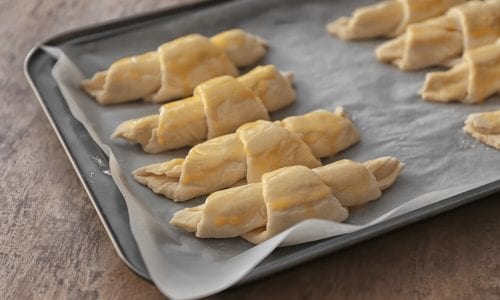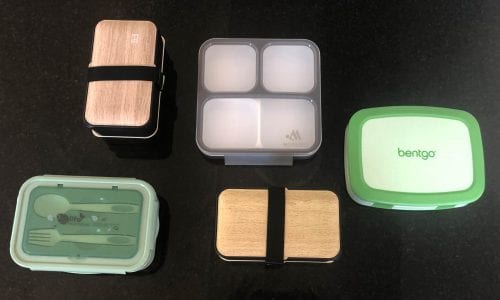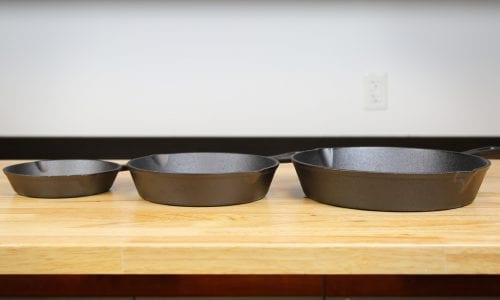The Best Small Freezer

Our Review Process
Don't Waste Your Money is focused on helping you make the best purchasing decision. Our team of experts spends hundreds of hours analyzing, testing, and researching products so you don't have to. Learn more.
Our Picks For The Top Small Freezers
- 1. MIDEA WHS-129C1 Single Door Adjustable Small Freezer, 3.5-Cubic Feet
- 2. Midea WHS-109FW1 Reversible Door Upright Small Freezer, 3.0-Cubic Feet
- 3. Whynter CUF-210SS Upright Lock Compact Small Freezer, 2.1-Cubic Feet
- 4. E Euhomy Small Upright Countertop Freezer, 3.0-Cubic Feet
- 5. Kismile Energy Saving 2-Layer Mini Freezer, 2.1-Cubic Feet
- 6. Northair Chest Easy Open Deep Mini Freezer, 3.5-Cubic Feet
- 7. Kismile Energy Saving Small Freezer, 2.1-Cubic Feet
- 8. Koolatron KTUF88 Flat Back Small Upright Freezer, 3.1-Cubic Feet
- 9. E Euhomy Food Storage Adjustable Temperature Mini Freezer, 1.1-Cubic Feet
For space-saving capacity, this deep/chest freezer is your best bet. You'll only need a narrow storage space, with no clearance requirements around it, but it provides 3.5 cubic feet of storage inside. If you need even more storage, you can choose one of their larger models, which go all the way up to 7 cubic feet.
Largest CapacityWith 3.5 cubic feet of storage, this deep/chest freezer will give you the most storage without taking up much space.
Featuring 3.0 cubic feet of space with a pair of shelves and a basket, this upright freezer can hold plenty of food. It has Energy Star certification, temperature control and a reversible door too.
Spacious and EfficientIf you're looking for an efficient small freezer that doesn't sacrifice space or flexibility, then consider this option.
Surprisingly, this small freezer uses less power than a light bulb! It's compact and perfect for a garage, dorm room or office space. Shoppers will love that the freezer is constructed using a sleek stainless steel, which not only resists rust, but is also very easy to clean.
Durable Stainless SteelThe door on this small freezer is reversible and equipped with a recessed handle.
With this small freezer, you'll be able to store everything from seafood to breast milk. The unit's compact design allows you to place it virtually anywhere, while the temperature dial allows you to switch between seven different temperature settings. Since the door is reversible and the shelves are removable, you'll also be able to customize the f...
Removable ShelvesThis small freezer is available in 1.1, 2.1 and 3.0 cubic feet.
Buying Guide
Whether you need some extra space for frozen food outside your main fridge or need a compact option for a dorm or RV, a small freezer can help meet your need. Rather than have separate places for refrigerated and frozen food like your home’s main fridge has, these compact models serve to keep your food frozen for later thawing or immediate use.
You can find small freezers in both chest and upright styles. A chest freezer has a lid that opens from the top, and you place your food down in it. This can work well for long-term storage but may be inconvenient if you want to quickly grab something. Upright freezers, on the other hand, open with a door on the front like a traditional home fridge, so you can pull something out quickly and easily see the contents.
Whether you decide on a chest or upright freezer, you’ll usually have shelves or baskets inside to help organize your food. For example, an upright freezer might have two shelves to put boxes of frozen food and one or more baskets on a bottom shelf to group smaller items. A chest freezer may have deep baskets that pull out so you can access food. You can often remove shelves or baskets as needed.
Along with considering the style of small freezer, you’ll need to decide on a capacity. Small freezers often have capacities ranging between 1.0 and 3.5 cubic feet, where a single cubic foot can mean up to 35 pounds of food. The smaller sizes can fit easily on a counter or in a tight space on an RV, while larger ones can go on the floor or under a cabinet.
Depending on your preferences, you may want to find a small upright freezer with a reversible door so you can open it from either side, or you may need a model with adjustable legs if you need to place the freezer on an uneven surface. You can also find models that operate quietly, don’t use too much energy and give you control over the temperature.
What to Look For
- If you feel that your small freezer just doesn’t have enough space for your food, consider some handy organization tips. Frozen food boxes can quickly fill up your space, so consider removing your items from the packaging if you can safely do so. You can use freezer bags to organize things like popsicles and appetizers and keep them from getting freezer burn. And if you store an ice tray in the small freezer, consider a standalone ice maker to save some space.
- Whether your freezer lets you adjust the temperature or not, you’ll want to be careful to maintain a safe temperature that won’t cause your food to spoil and possibly get you sick. While refrigerated foods can be safe at 40 degrees Fahrenheit, your freezer should stay at least 0 degrees Fahrenheit. You can use a special thermometer to check this if you’re unsure, or your freezer may have a built-in temperature indicator.
- If you need versatility and may use your small freezer for different purposes and at different locations, look for models with features like reversible doors and removable shelves.
- When choosing the right size for your small freezer, you can keep a few guidelines in mind. Consider that you could fit up to 35 pounds worth of food in each cubic foot, but know that large boxes can mean you can’t fit as many items inside. At the same time, you’ll need to think about the space where you want to put the freezer and measure carefully. Account for some extra space on all sides of the freezer too since you won’t want ventilation issues.
- To save money on your electricity bill, you can find plenty of small freezers that have the Energy Star rating. Also, pay attention to how efficiently the manufacturer says the machine works.
- Clean your small fridge regularly to get rid of bad food and scrub away any leaks or messes. As a rule of thumb, try to check weekly for expired food and give your small freezer a deep clean every few months.
More to Explore
While electric freezers didn’t come into existence until the 20th century, the idea and some of the components have a long history. The refrigerated coil needed for cooling foods and other items came out way back in the 11th century. Artificial refrigeration systems can date way back to the middle of the 18th century.
It was in the 1800s when practical refrigeration machines appeared, but these were often for medical use rather than food preservation. For example, a doctor named John Gorrie created an ice-making device to help patients with yellow fever.
James Harrison would eventually create a cooling device for food purposes in 1859, but people would often use alternatives like iceboxes through the 20th century until modern electric freezers became common in homes.



















